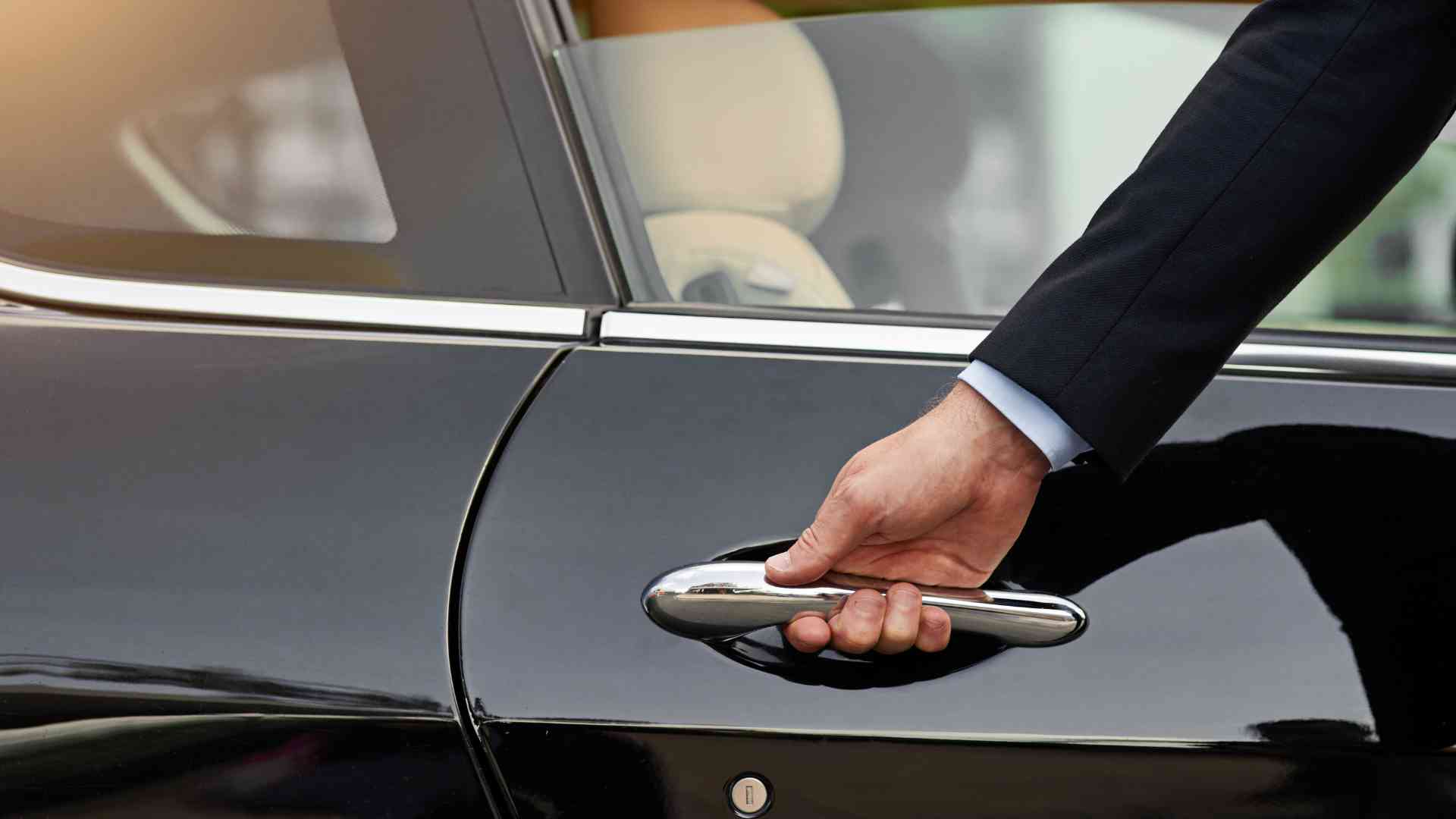Torben Robertson
8 mins
Tax-Free Car Allowances Attract Sales Talent
Tax-free car allowances offer a wide range of benefits that attract sales talent for your company, giving you an edge when hiring.

Follow us on LinkedIn
Our PageWhy attracting sales talent is hard, and why you need a tax-free car allowance
Attracting top sales talent is tough right now. It always has been, but in today’s market, you need to provide convincing reasons for first-class salespeople to join your team instead of someone else’s. A great way to do this is with a Tax-Free Car Allowance.
I will let you in on a secret that can set you apart from your competitors. Many companies are still providing archaic, taxable allowances. They do not know about the IRS guidelines that allow companies to reimburse for driving expenses tax-free. Their sales teams are losing 30% of their car allowance to payroll and income tax.
You can get the edge in hiring by putting that 30% back in your team’s pocket.
Car Allowances vs. Company Car Fleets
The modern vehicle program is not a fleet of company cars. Nowadays, companies are using employee-owned fleets. Your salespeople bring their personal car to work, and you reimburse them for it.
Salespeople prefer this, and it is better for your balance sheet.
Salespeople drive a car that fits their lifestyle and they get reimbursed for it. Many companies cover 70% of their drivers’ vehicle operating expenses when those cars are being used for business. So drivers get most of their car expenses paid for and it is a car of their choosing.
Contrast that with company-owned car fleets: drivers have to drive whatever the employer provides, plus pay a personal use chargeback. Ask a salesperson whether they want to pay a $300 monthly chargeback to drive a car they do not like; I bet the answer is “no thanks.”
Moreover, company-owned or leased fleets are the wrong thing to have on the lot right now. We are in uncertain economic times. Owning large numbers of depreciating assets is not a safe strategy. If you want an agile and robust business, you need the ability to flex operational capacity. If your workforce shrinks or grows, you should not need to add or subtract several dozen $30,000 assets.
So then the question is, How do I reimburse my driver for the business use of their personal vehicle? The wrong answer is taxable, lump-sum allowances. The right answer is tax-free reimbursement programs.
How do I take the tax off my sales team's driving expenses?
To get salespeople the tax-free reimbursement program they want, the one that will sweeten the deal when you are in hiring negotiations, your best choice is to get an outsourced vehicle program.
Outsourced reimbursement providers like Cardata are able to provide you with the complete set of tools you need in order to pay IRS-compliant reimbursements.
IRS-compliant programs can be burdensome to operate in-house. There are strict measures to which you must adhere: mileage logging, insurance verification; drivers have to purchase cars of a certain value, you need to set a program standard vehicle—the list goes on, and it is not a list you want to dump on your HR department.
Instead, provide your drivers with mileage tracking software and your managers with a cloud reporting dashboard.
You can actually save your drivers a full week of work per year with a GPS tracking app. IRS-compliant mileage logs—which might take up to 4 minutes to fill out per sales call—can be replaced by a mileage tracker.
And the shoeboxes of mileage logs and gas receipts that admins loathe can be replaced with a cloud reporting dashboard. Cardata Cloud, for example, provides your admin team with everything they need to verify and approve your business Miles.
These software programs, operating in tandem, give your company everything they need to take the tax or your team’s driving expenses. They replace all the necessary but tedious manual processes that the IRS requires to justify tax-free reimbursement plans.
What am I risking without proper documentation?
Paying a lump sum allowance seems easy. You just pick an arbitrary number and add it to a salesperson’s paycheck.
However, depending on your state, you and your employee could be losing 30-40% of that allowance to tax waste. If you want to read more about how tax affects archaic allowances, check out this article:
How payroll and income tax affect business driving.
Tax-free mileage reimbursement programs
Consider this benefit of a tax-free reimbursement plan. Normally a person would have to pay for their family car expenses out of pocket, out of their net income.
When an employer reimburses them for the business use of their personal vehicle, a driver’s income is untouched. Car expenses come out of their gross take-home rather than their net.
Drivers get their car payments bolstered and companies get a lean vehicle program.
How are tax-free reimbursements paid?
Reimbursement programs work in one of two ways. Either they are simple Cents per Mile (“CPM”) programs or programs that pay a per mile rate together with a fixed rate. This latter type of program is called a Fixed and Variable Rate (“FAVR”) program.
FAVR programs are the gold standard. There are certain cases where Cents per Mile programs are useful to companies, but at Cardata we often find that FAVR is the best solution to vehicle program woes.
Cents per Mile
The CPM rate is a flat rate paid to drivers on a per mile basis. It is an optional rate that the IRS sets every year; or, rarely, twice a year, as is the case right now.
The IRS recently increased their optional standard mileage rate to 62.5¢, up four cents from the 58.5¢ with which we began the year.
This is the first time in more than ten years that the IRS has made a midyear change to the optional standard mileage rate. The last time was in 2011, and before that in 2008. This rare midyear adjustment reflects the rising cost of driving.
No doubt prices are rising—used cars and gasoline are two major drivers of the overall inflation we are now experiencing. While the new IRS rate is a welcome revision for companies and drivers, FAVR has mechanisms for adjusting to fluctuating costs as they rise, putting it ahead of the IRS.
If you want to attract top sales talent, FAVR is often the tool to help you do it. The ability of FAVR to flex when prices go up and down protects drivers from unexpected,
Fixed and Variable Rate ("FAVR")
FAVR programs work by reimbursing a fixed dollar amount for fixed vehicle expenses and a variable per-mile rate.
Fixed expenses include licensing fees, insurance, and other expenses that do not change based on how far or often a salesperson drives. These expenses are also not as likely to fluctuate in response to, for example, geopolitical crises. Your insurance expenses tend to stay the same while gas prices are rising.
Gas expenses are repaid using the variable per-mile reimbursement rate, as are other volatile costs like repair. The latter can fluctuate in response to, for example, supply chain disruptions and part shortages.
It is also possible to offer regional reimbursements with FAVR programs. Cardata’s programs, in particular, use data to reimburse accurate regional reimbursements. Gas prices, for example, are calculated monthly based on data pulled from drivers’ local stations, and a new variable rate is produced with this information.
Read about how Cardata reimburses for fuel expenses using data.
This process is not possible on Cents per Mile programs: CPM is an average of all fuel expenses in the entire US. But averages are accurate precisely nowhere. While 62.5¢ might cover the cost of fuel on the Gulf Coast, it might not on the West Coast. Insurance feed might be higher in city centers than in rural towns. Salespeople live and work in all of these places, so FAVR makes fairness possible by opening up the possibility of regionality. (Note that you need software in order to fully take advantage of these possibilities.)
Sales teams appreciate the accuracy and fairness of a FAVR program.
Summary:
You can attract and retain talent with the right vehicle program because:
- Drivers can ditch personal use chargebacks and drive the car they want
- Salespeople get 30% back compared to a taxable allowance
- FAVR programs adapt to rising gas prices
- FAVR programs reimburse at fair regional rates
Do you need help strengthening your sales team? You need to give them the right tools so that they can do out and win business for you. Cardata could be a great perk to offer them. If you want to see our software in action, schedule a demo with us.
About Cardata
We bring technology and people together to provide tax-free vehicle allowances to some of the world’s most trusted brands. Companies like Crayola and Canon come to us to reduce the cost and hassle of their vehicle programs.
Share on:


